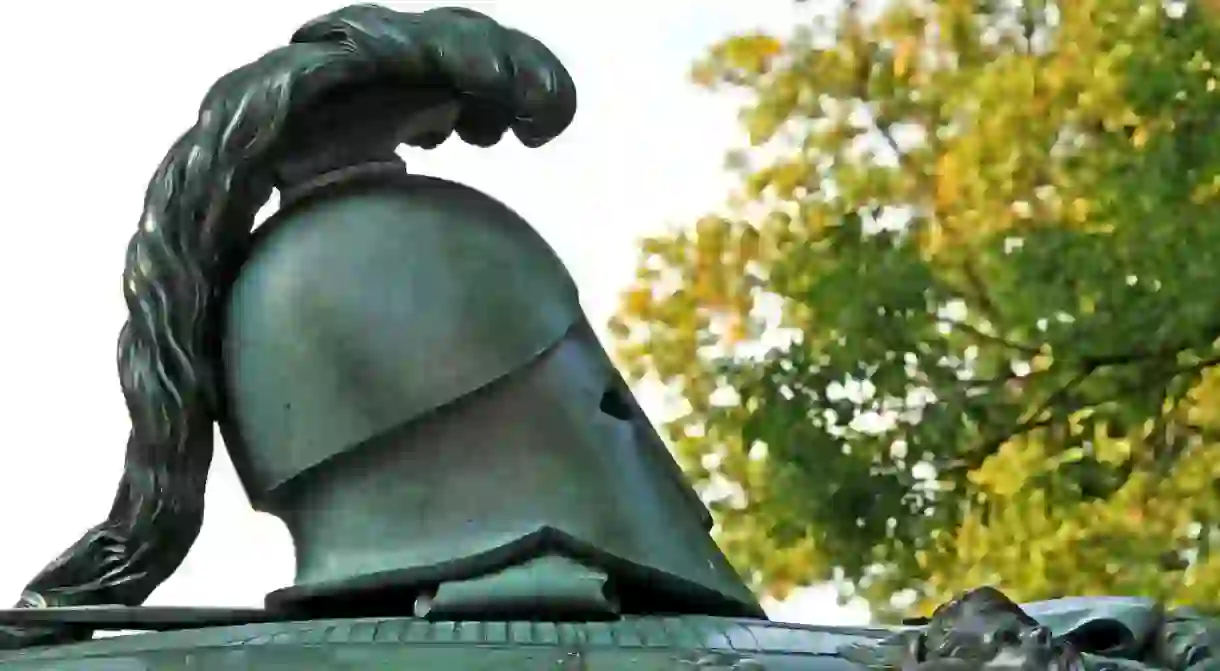A Traveler's Guide to World Heritage Sites in Finland

The United Nations Educational, Scientific and Cultural Organization seeks to preserve the world’s most important natural and man-made sites by awarding them with UNESCO World Heritage status in order to give them special protection. Finland has one geopark of significant geographical importance at Rokua and seven World Heritage sites, which are all of the unique meaning in some way. Each of these sites are worth a visit for anybody interested in learning about Finnish history and culture or wanting to view some of the world’s most beautiful landscapes.
Rauma Old Town
Building, Market

Suomenlinna
Archaeological site, Building, Natural Feature, Church, Historical Landmark

One of the most iconic sites in all of Finland, Suomenlinna is a set of islands off the coast of Helsinki that hold a military fortress, which defended the Finnish capital and south coast during some of the country’s deadliest conflicts. It is important to UNESCO as an example of 18th-century military architecture. Today, the islands are a residential district with apartments fitted right into the old fortifications and are also popular with tourists for the museums, cafes and fortress ruins. Regular ferry services connect Suomenlinna to mainland Helsinki and leave around every 15 minutes during the daytime.
Petäjävesi Old Church
Cemetery, Church

Another fine example of classic Finnish architecture, Petäjävesi Church is one of few surviving churches constructed from logs, built in 1763. Most churches of this type were eventually destroyed by fire or dilapidated naturally, but Petäjävesi still stands. The church was left abandoned for many years after a new parish church was built but it was thankfully rediscovered and reconverted in the 1920s and now has protected status. It has also become a working church once again and is a popular wedding venue due to its stunning aesthetics and lakeside setting. The church is still open to visitors during the summer months, but they have to wear slippers inside to prevent further wearing of the wooden floors.
Verla Groundwood and Board Mill
Building, Museum

The pulp and paper industries were integral to the Finnish economy during the Industrial Revolution. The Verla groundwood and board mill and its surrounding areas are one of the few surviving settlements of this type and a wonderful example of how Finland’s forests aided the livelihoods of remote communities. Dating from the late 19th century, the area in the Kymi River Valley consists of the old groundwood mill, the water power plants, the mill owner’s residence and the workers’ houses. Most of these have now been converted into museums after the mill ceased operation in 1964, but due to their remote location they are only open and accessible during the summer.
Sammallahdenmäki Bronze Age burial site
Archaeological site, Ruins

One of the oldest surviving prehistoric sites in Finland, Sammallahdenmäki is located close to Rauma on the Gulf of Bothnia. The most notable part of the archaeological site is the 36 Bronze Age burial cairns built into the cliff face, estimated to be around 3,000 years old. These have done much to teach historians about ancient Scandinavian burial practices and religion. The area is free of charge to visitors throughout the year but is difficult to get around during the winter when the paths aren’t maintained.
Struve Geodetic Arc
Building

This World Heritage Site is actually made up of hundreds of small structures in 10 different countries stretching nearly 3,000 kilometres from Norway to the Black Sea. They form the points of a survey carried out by astronomer Friedrich Georg Wilhelm von Struve between 1816 and 1855 to accurately measure the size and shape of the planet, an important step in the field of earth science. Six stations still exist in Finland stretching all the way from Lapland to the southern coast. Most of them are only drill holes and difficult to spot, but you can potentially take a cross-country road trip to find them all.
Kvarken Archepelago
Natural Feature

The only natural formation in Finland with World Heritage status, the Kvarken archipelago is a series of 5,600 islands on the Gulf of Bothnia separating Finland and Sweden. What makes the archipelago particularly significant to UNESCO is that it is still slowly rising out of the sea after the melting of the continental ice sheet at the end of the last Ice Age 10,000 years ago. This means that new uninhabited islands occasionally pop up and form natural marshes and peninsulas. It is rare to find a natural site which changes so rapidly. Much of the archipelago is part of a national park so visitors are free to explore the beautiful islands by boat or go hiking, fishing or bird-watching.
Sites under consideration
Honourable mentions go to the six sites on UNESCO’s tentative list for consideration of World Heritage Status. Each of these sites are well-deserving of this status and worth a visit. Most of them are ancient sites: the stone carvings on Gaddtarmen island, the Stone Age ruin in Pattijoki, the rock paintings at Ristiina and the holy Sami worship site in Inari. Also up for consideration are the Paimio Hospital, which was designed in the 1930s by famous Finnish architect Alvar Aalto and the Saimaa lake system, one of the biggest lake systems in Europe and home to the Saimaa ringed seal, the world’s rarest species of freshwater seal.













